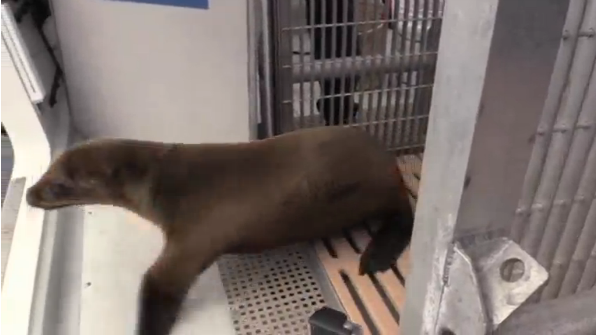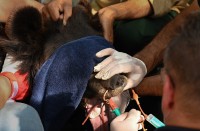
SAN DIEGO, CALIFORNIA, United States (Reuters) – A young California sea lion found malnourished and injured inside a waterfront San Diego restaurant was returned to the wild on Tuesday (April 5) after eight weeks of rehabilitative care at SeaWorld’s animal rescue center.
The female sea lion pup, nicknamed Marina, made headlines when she was discovered huddled in a choice booth at the Marine Room, a white-tablecloth eatery known for its gourmet seafood menu.
She was one of many hundreds of sea lions, mostly pups, to turn up starving and stranded along the California coast since last year, apparently the result of warming seas that have disrupted the marine mammals’ food chain.
At the time of her rescue, Marina, then 8 months old, weighed only about 20 pounds, about half the weight she should have for her age, and was suffering from an eye injury of unknown origins, according to SeaWorld.
After being nursed back to health, her eye healed, Marina was transported by boat with eight other recently rescued and rehabilitated sea lions for return back to their home in the Pacific, 12 to 14 miles off the coast of San Diego, SeaWorld said.
“I was part of the team that rescued Marina, and really to see how emaciated this pup was and knowing the odds were against her, to be part of the team that returned her to the world today is really an emotion that’s hard to describe,” stranded-animal coordinator Jody Westberg said. “The thing I want everybody to know about Marina is she was a feisty, sassy animal, and part of the success of her rehabilitation was that effort and that energy Marina put forth,” Westberg added.
So far in 2016, SeaWorld San Diego says it has rescued more than 300 marine mammals. At about this time last year, a record 2,250 sea lions had been found stranded on Southern California
beaches since the start of 2015, federal scientists reported.







